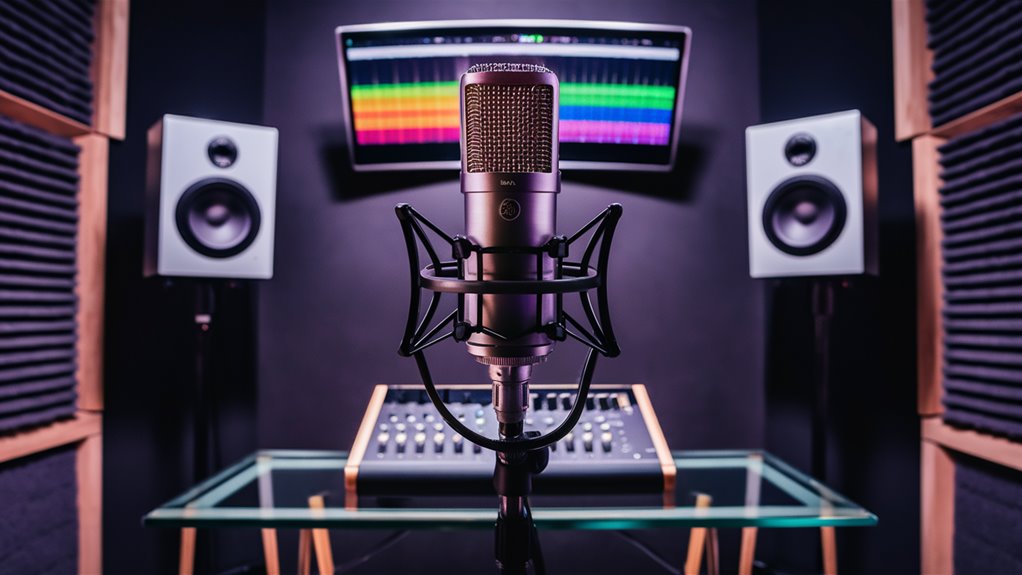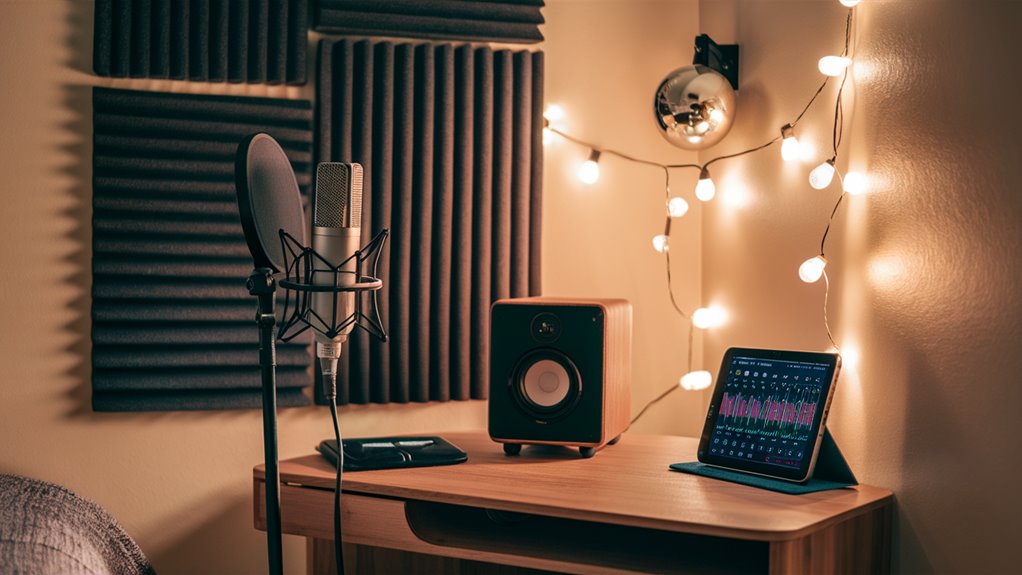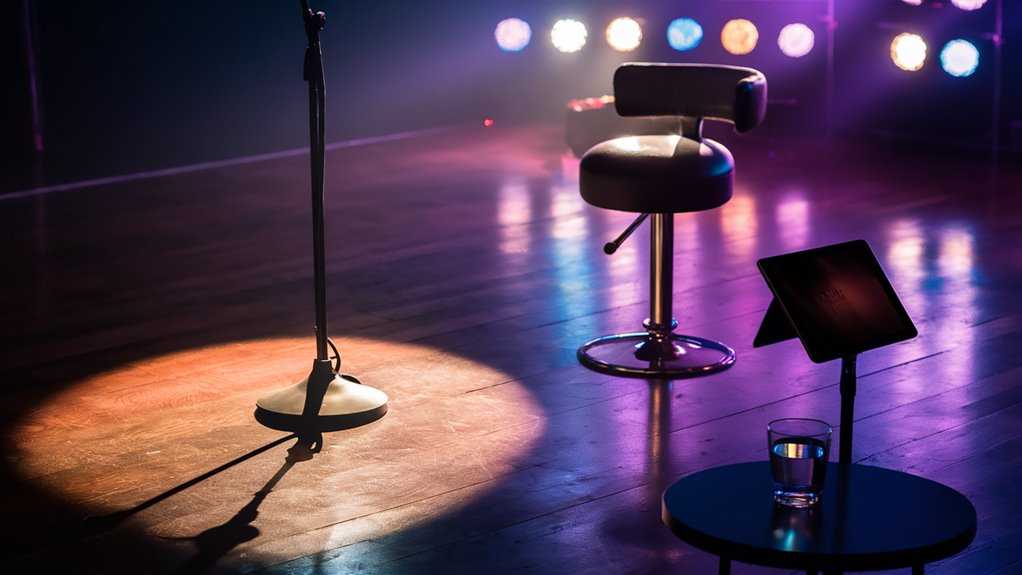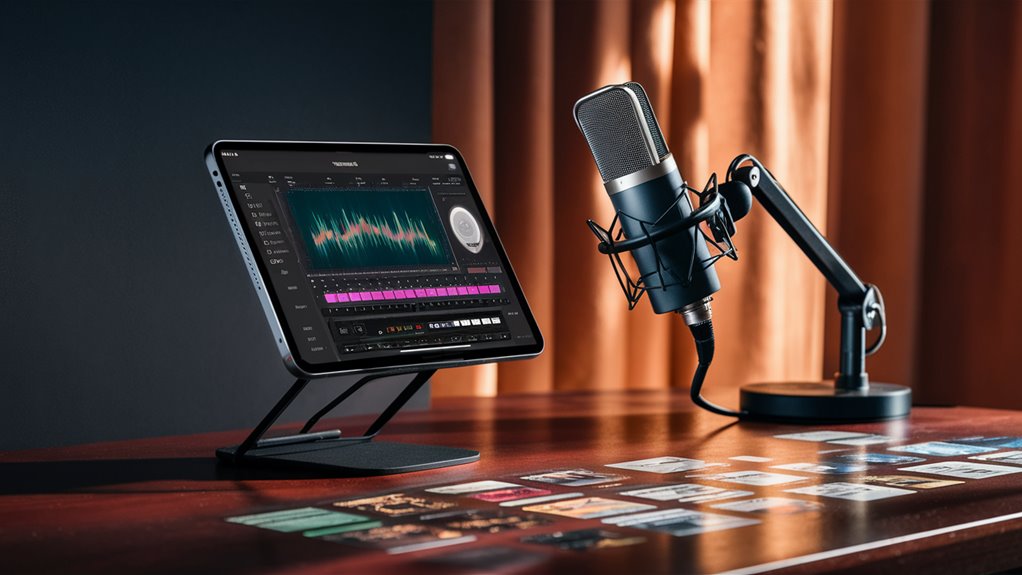The Ultimate Solo Karaoke Setup Guide
Professional-Grade Equipment Essentials
Creating a professional solo karaoke environment starts with selecting the right equipment. A high-quality dynamic microphone connected to a dedicated audio interface forms the foundation of your setup. Position powered speakers at ear level for optimal sound projection and monitoring. Install a high-resolution display to clearly view lyrics and musical cues, complemented by a digital mixer for precise control over your voice-to-music balance.
Room Acoustics and Space Optimization
Transform your practice space with strategic acoustic treatment. Position soft furnishings and acoustic panels to minimize sound reflection and echo. Maintain at least a 3-foot distance from walls to prevent sound buildup. Consider portable sound barriers for enhanced acoustic isolation and cleaner vocal recordings.
Building Your Song Portfolio
Develop a carefully curated repertoire of 20-30 songs that showcase your vocal strengths. Select high-quality backing tracks that match your vocal range and style preferences. Focus on:
- Signature songs that highlight your unique voice
- Popular crowd favorites for engagement
- Technical challenges to improve your skills
- Multi-genre selections for versatility
Performance Enhancement Features
Integrate real-time vocal effects and pitch correction software for professional-quality sound. Implement monitor speakers for accurate feedback during performance. Use LED lighting to create an immersive atmosphere. Consider a recording capability to review and improve your performances.
Setup Maintenance and Optimization
Regularly calibrate your equipment and update your song database. Perform routine sound checks before each session. Keep your lyric displays updated and properly synchronized. Maintain optimal room temperature for vocal health and equipment longevity.
Essential Solo Karaoke Equipment

Essential Solo Karaoke Equipment Guide
Core Equipment Setup
Professional microphone selection is crucial for quality solo karaoke.
A dynamic microphone or condenser microphone provides superior vocal capture while reducing unwanted feedback.
Connect your microphone through an audio interface to either a dedicated karaoke system or computer for optimal sound processing.
Sound System Requirements
A professional-grade speaker system forms the backbone of any solo karaoke setup.
Powered speakers or a compact PA system deliver crystal-clear audio output with minimal distortion at performance volumes.
For private practice sessions, monitoring headphones enable precise vocal control while maintaining neighbor-friendly noise levels.
Digital Components
Karaoke software or a subscription service provides access to extensive song libraries and professional backing tracks.
Install your setup with a high-resolution display or large-screen TV positioned at proper eye level to ensure comfortable lyric viewing during performances 호치민퍼블릭 가라오케
Essential Accessories
Microphone stand selection is vital for proper performance posture and hands-free operation.
A digital mixer or audio controller allows precise adjustment of voice-to-music ratios and enables addition of professional effects like reverb and echo.
These components enhance overall performance quality and provide greater control over your sound.
Creating Your Practice Space

Creating Your Perfect Karaoke Practice Space
Setting Up the Room Environment
Choose a room with optimal acoustic properties for your practice sessions. Carpeted spaces and rooms with soft furnishings provide ideal sound absorption.
Position yourself minimum three feet from walls to eliminate unwanted sound reflections and maintain audio clarity.
Microphone Positioning and Setup
Proper microphone placement is crucial for practice effectiveness. Set your microphone at your natural performance position with a slight upward angle toward your mouth.
For consistent mic positioning, use a properly adjusted mic stand and mark the optimal floor position with tape for repeatable setup Everyone at Your Special Occasion
Lighting and Sound Monitor Configuration
Install soft, front-facing lighting to eliminate shadows on your lyrics display.
Position speakers or monitors at ear level, angled directly toward your performance area for maximum sound clarity and monitoring effectiveness. This configuration ensures optimal visibility and audio feedback during practice.
Practice Space Organization
Establish an efficient practice layout with essential items within reach:
- Song lists and performance notes
- Hydration station
- Sound control access
- Dedicated equipment storage area for protection between sessions
This organization ensures seamless practice flow and proper equipment maintenance, maximizing your practice time and protecting your investment in gear.
Selecting Songs for Solo Performance

Ultimate Guide to Selecting Songs for Solo Performance
Mastering Vocal Range Assessment
Song selection is the cornerstone of exceptional solo performances.
Begin by identifying your comfortable vocal range and natural voice type.
Conduct a thorough assessment of your highest and lowest sustainable notes to establish your optimal singing zone. Select performance pieces that align perfectly within these vocal boundaries.
Optimal Song Structure for Solo Delivery
Clear melodic lines and distinct vocal passages prove most effective for solo performances.
Prioritize songs with strong lead vocal arrangements while avoiding compositions heavily dependent on backing harmonies or complex vocal layering.
Signature hits from renowned vocalists like Adele, Frank Sinatra, and Whitney Houston consistently deliver powerful solo impact.
Technical Considerations for Performance Success
Master the balance of tempo and complexity in your song choices.
Mid-tempo selections offer ideal phrasing opportunities and sustainable energy flow throughout the performance.
Focus on maintaining consistent vocal power and presence without relying on supporting vocals.
Performance Duration and Audience Connection
Select pieces running 3-4 minutes to maximize impact while preserving vocal stamina.
Choose emotionally resonant songs that authentically reflect your artistic style and performance strengths.
Strong personal connection to the material naturally enhances audience engagement and overall performance quality.
Key Selection Criteria:
- Vocal range compatibility
- Clear melodic structure
- Sustainable tempo
- Optimal duration
- Personal connection
Microphone Techniques and Voice Control

Mastering Microphone Techniques and Voice Control for Superior Performance
Professional Microphone Handling Techniques
Optimal microphone positioning is crucial for achieving studio-quality sound projection. Position the microphone 2-3 inches from your mouth at a 45-degree angle, adjusting distance dynamically based on volume intensity.
During powerful vocal passages, increase mic distance to prevent audio distortion. For softer melodic sections, decrease the gap to maintain consistent audio levels.
Advanced Grip and Control Methods
Proper microphone grip technique significantly impacts sound quality. Maintain a firm hold near the microphone’s center of gravity using your dominant hand for maximum stability and control.
Avoid cupping the microphone head, as this creates unwanted frequency resonance and potential feedback loops in the sound system.
Voice Control and Breathing Optimization
Diaphragmatic breathing forms the foundation of superior vocal performance. Execute deep diaphragm breaths before musical phrases while maintaining controlled airflow throughout vocal delivery.
Monitor pitch accuracy by staying attuned to backing tracks and implementing real-time vocal adjustments. For challenging high notes, combine increased mic distance with powerful projection rather than vocal strain.
Proper vocal technique requires maintaining relaxed throat and jaw muscles, as tension negatively impacts performance quality and vocal sustainability.
Expert Performance Tips
- Dynamic distance control based on volume intensity
- Strategic grip placement for optimal handling
- Breathing technique optimization for sustained performance
- Pitch monitoring through active listening
- Tension elimination in throat and jaw areas
Recording and Self-Assessment Methods

Recording and Self-Assessment Methods for Karaoke
Professional Recording Techniques
Digital recording equipment is essential for capturing high-quality karaoke performances.
While smartphones provide convenient voice recording capabilities, a dedicated digital audio recorder with professional-grade microphones delivers superior sound quality.
Ensure your setup captures both vocal performance and backing track clearly to evaluate pitch alignment and timing precision.
Performance Analysis Strategy
Implement a systematic approach to evaluate your karaoke recordings. Break down assessment into key components:
- Pitch accuracy evaluation and identification of off-key sections
- Rhythm and timing analysis against the backing track
- Vocal dynamics assessment, including volume control
- Emotional expression and song interpretation review
Progress Tracking System
Maintain a detailed practice log to document performance evolution. Record key metrics:
- Problem areas requiring attention
- Specific improvement goals
- Multiple recordings of signature songs
- Weekly or monthly progress benchmarks
Performance Enhancement Tools
Recording software options for optimal results:
- Professional DAW (Digital Audio Workstation) systems
- Mobile recording applications with analysis features
- Audio interfaces for direct computer connection
- Pitch detection software for accuracy training
Monitor long-term development through systematic recording comparisons and adjust training methods based on documented progress.
Focus practice sessions on identified weak points while maintaining strengths.
Building Your Digital Song Library

Building Your Digital Song Library: The Ultimate Guide
Essential Components of a Professional Karaoke Collection
Starting your digital song library requires 20-30 carefully selected tracks that align with your vocal capabilities and performance style.
High-quality backing tracks form the foundation of any serious vocalist’s repertoire, available through premium platforms like Karaoke Version, SingKing, and KaraokeVersion.com.
Digital Library Organization and Management
Implement a systematic organization method using clear file naming conventions that incorporate:
- Song title
- Artist name
- Musical key
- Performance category
Create dedicated genre folders and maintain secure backups of all tracks.
Structure your library with a 60/40 ratio between comfort-zone selections and skill-building challenges.
Technical Specifications and Track Management
Download tracks in premium audio formats:
- WAV files for maximum quality
- High-bitrate MP3s (320kbps minimum)
- Adjustable key tracks for versatility
Maintain a comprehensive tracking system through spreadsheets documenting:
- Tempo markers
- Key change points
- Performance notes
- Technical sections
- Practice progress
This structured approach ensures a professional-grade song collection ready for any performance scenario while supporting continued vocal development.
